We can supply seamless or welding molybdenum tube and pipe at very 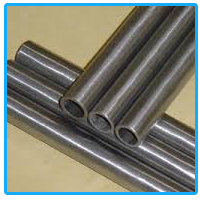 competitive prices of good quality .
competitive prices of good quality .
In its pure form, molybdenum is a silvery-grey metal with a hardness of 5.5. it has a melting point of 2623 °c (4753 °f); of the naturally occurring elements, only tantalum, tungsten and carbon have higher melting points. weak oxidation of molybdenum starts at 300 °c (572 °f). it has one of the lowest coefficients of thermal expansion among commercially used metals. the tensile strength of molybdenum wires increases about 3 times, from about 10 to 30 gpa. when their diameter decreases from ~50–100 nm to 10 nm.[7] molybdenum is a transition metal with an electrone gativity of 2.16 on the pauling scale and a standard atomic weight of 95.95 g/mol. it does not visibly react with oxygen or water at room temperature, and the bulk oxidation occurs at temperatures above 600 °c, resulting in molybdednium trioxide.
Molybdenum is also used in steel alloys for its high corrosive resistance and weldability. molybdenum contributes further corrosion resistance to type-300 stainless steelspecifically type-316) and especially so in the so-called super austentic stainless steels (such as alloy al-6xn, 254smo or 1925hmo). molybdenum acts by increasing lattice strain, thus increasing the energy required to dissolve out iron atoms from the surface. molybdenum can also be used to enhance the corrosion resistance of ferritic (for example grade 444) and martensitic (for example 1.4122 and 1.4418) stainless steels molybdenum dusts and fumes, which can be generated by mining or metalworking, can be toxic, especially if ingested (including dust trapped in the sinuses and later swallowed).low levels of prolonged exposure can cause irritation to the eyes and skin. direct inhalation or ingestion of molybdenum and its oxides should be avoided regulations specify the maximum permissible molybdenum exposure in an 8-hour day as 5 mg/m3. chronic exposure to 60 to 600 mg/m3 can cause symptoms including fatigue, headaches and joint pains
Products :-| Name | Outer Diameter(mm) | Wall Thickness(mm) | Length(mm) | |||
| Molybdenum Tube/Pipe | Size | Tolerance | Size | Tolerance | Size | Tolerance |
| <100 | ±1.0 | <1 | ±1.0 | <100-150 | ±2.0 | |
| 100-200 | ±2.0 | 1-3 | ±0.25 | 150-350 | ±3.0 | |
| 200-300 | ±3.0 | 3-10 | ±0.5 | 350-650 | ±4.0 | |
| 300-400 | ±5.0 | 10-20 | ±1.0 | 650-2000 | ±5.0 | |
| >400 | ±7.0 | 20-30max. | ±1.0 | 2000-6000max. | ±5.0 | |
Manhar Metal Flange fabricates steel forged flanges from the materials that best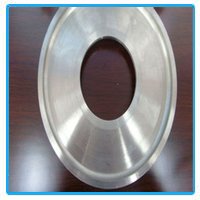 suit your project needs and budget. A popular metal for flange fabrication is chrome molybdenum. Chrome molybdenum is a high strength steel whose alloying elements are chromium and molybdenum and is commonly known as chrome moly
molybdenum hardness and strength properties make it great for heavy duty projects. molybedenum however, is not recommended for projects that require not welding and does not have a high enough chromium content to be corrosion resistant, like stainless steel. molybdenum is a great choice for flanges because it can be hardened to reduce wear and tear .
suit your project needs and budget. A popular metal for flange fabrication is chrome molybdenum. Chrome molybdenum is a high strength steel whose alloying elements are chromium and molybdenum and is commonly known as chrome moly
molybdenum hardness and strength properties make it great for heavy duty projects. molybedenum however, is not recommended for projects that require not welding and does not have a high enough chromium content to be corrosion resistant, like stainless steel. molybdenum is a great choice for flanges because it can be hardened to reduce wear and tear .
Manhar Metal Flange fabricates flanges to your exact specifications and with the materials that suit your project needs. We are a flange SUPPLIERS and supplier, serving customers nationwide and internationally.
Pure Molybdenum fasteners have excellent heat resistance, with their melting point 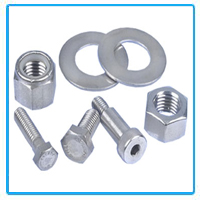 being at 2,623 degrees C. Useful for heat resistant devices such as sputtering equipment and high temperature furnaces. Available in sizes M3-M10.
being at 2,623 degrees C. Useful for heat resistant devices such as sputtering equipment and high temperature furnaces. Available in sizes M3-M10.
Manhar Metal has a long track record of producing top of the line, customizable molybdenum fasteners at competitive prices.
Molybdenum screws are produced for high temperature vacuum environments. We produce three head types (fillister, pan & flat) in both ANSI and metric sizes. We stock these refractory screws in standard lengths, but can also produce custom lengths and custom features. Please take note of the sketch provided for screw specs.
Molybdenum refractory washers are available in both inch and metric sizes. Washers help to distribute the load of a threaded fastener. All standard sizes are available. We can also produce custom sizes.
Molybdenum bar is used as vacuum material, cathode for emitting tube, high temperature electrodes etc. 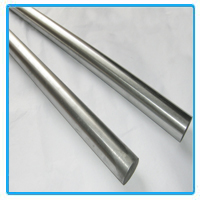 Molybdenum rods/bars/pole is a material with silver gray or gray metallic luster. They are used for producing molybdenum line-cutting, filament, coil wire, lead wire support, electron vacuum components and grid, etc.
Molybdenum rods/bars/pole is a material with silver gray or gray metallic luster. They are used for producing molybdenum line-cutting, filament, coil wire, lead wire support, electron vacuum components and grid, etc.
Application:
Molybdenum bar is mainly used in drawing thin molybdenum wire, molybdenum electrode and steel-making additives. Meanwhile, molybdenum bar is also widely used in the furnace industry for radiation screens, elements, and sintering trays
Specification:
Width |
Thickness |
Length |
Length Tolerance |
|---|---|---|---|
15mm |
15mm |
600mm |
+1mm, -0 |
20mm |
20mm |
1000mm |
+1mm, -0 |
45mm |
45mm |
1200mm |
+2mm, -0 |
60mm |
60mm |
1500mm |
+3mm, -0 |
Grade |
The impurity content is not more than % |
|||||||
Fe |
Ni |
Al |
Si |
Mg |
C |
N |
O |
|
Mo-1 |
0.01 |
0.005 |
0.002 |
0.01 |
0.005 |
0.01 |
0.003 |
0.008 |
Mo-2 |
0.01 |
0.005 |
0.005 |
0.01 |
0.005 |
0.01 |
0.003 |
0.02 |
Working primarily with Molybdenum , Manhar Metal supplies refractory metals cut to size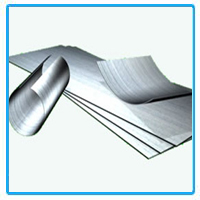 for various applications and industries. Depending on our superior water-jet cutting, blanchard grinding, and surface grinding abilities, we pride ourselves on meeting our clients' unique requirements. We're pleased to accommodate parts up to 1 inch in thickness, up to 10 feet long, and up 8 feet wide, and we can cut details within the material as well. With many of our customers requiring material for high-temperature furnace components, we maintain an impressive stock and feature a two day turnaround. Also appropriate for applications as diverse as medical devices and furnace rails, our cut plates and sheet metal serve numerous high-performance applications
for various applications and industries. Depending on our superior water-jet cutting, blanchard grinding, and surface grinding abilities, we pride ourselves on meeting our clients' unique requirements. We're pleased to accommodate parts up to 1 inch in thickness, up to 10 feet long, and up 8 feet wide, and we can cut details within the material as well. With many of our customers requiring material for high-temperature furnace components, we maintain an impressive stock and feature a two day turnaround. Also appropriate for applications as diverse as medical devices and furnace rails, our cut plates and sheet metal serve numerous high-performance applications
Basic Info.
Powder:
Not Powder
Purity:
99.95min
Density:
10.2g/cm3
Melting Point:
2610c
Application Temperature Environment:
1500--1800c
Export Markets:
Global
Physical and chemical properties
(1) Density: 10.2g/cm3
(2) Surface roughness: < 1.6
(3) Purity: Mo99.95%min.
(4) Application temperature environment: 1500~1800
Products
BLOCK, ROD ,ROUND BAR,ROLLED BAR, SQUARE , HEX ,STRIPS, FLAT, ,RECTANGLES.
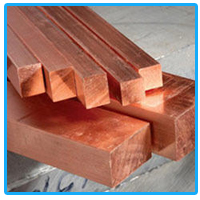
Chromium copper alloys are high copper alloys, containing 0.6 to 1.2% cr. the chromium copper alloys are used for their high strength, corrosion resistance and electrical conductivity. the chromium copper alloys are age hardenable, which, in this case, means that a change in properties occurs at elevated temperature due to the precipitation of chromium out of the solid solution. the strength of fully aged chromium copper is nearly twice that of pure copper and its conductivity remains high at 85% iacs, or 85% that of pure copper. these high strength alloys retain their strength at elevated temperatures. the corrosion resistance of chromium copper alloys is better than that of pure copper because chromium improves the chemical properties of the protective oxide film. chromium copper has excellent cold formability and good hot workability. it is used in applications such as resistance welding electrodes, seam welding wheels, switch gears, cable connectors, circuit breaker parts, molds, spot welding tips, and electrical and thermal conductors that require strength. chromium copper alloys are designated as uns c18050 through c18600; the cast alloys are c81400 through c81540.
The age hardening reaction occurs because the solid solubility of chromium in copper decreases as the temperature decreases. the structure of slow cooled chromium copper is a two phase mixture of chromium and alpha copper. superior mechanical properties are achieved by fast-cooling the chromium copper alloys from the annealing temperature, so the chromium remains in a supersaturated solid solution with the copper. followed by an aging treatment where the chromium precipitates from the solid solution forming a very fine dispersion of precipitates in the matrix. the microstructure of a quenched or quickly cooled chromium copper alloy appears similar to that of the unalloyed copper. a fast cool prevents the chromium from precipitating out of the solid solution, so the resulting cast structure consists of a single phase alpha copper structure. the first material to solidify is pure copper, followed by a eutectic mixture of alpha and chromium. the alpha and chromium eutectic material forms a lamellar structure in the interdendritic regions. the microstructure of the wrought alloy consists of equiaxed, twinned grains of alpha copper solid solution. typically the allow are cooled rapidly so the chromium remains in alpha copper solid solution. the tempering treatment allows the chromium to precipitate out of solution forming a dispersion of chromium precipitates throughout the matrix. the chromium precipitates, or hardening precipitates, can be very fine and may not be visible at low magnifications.
Products
WIRE ,BLOCK, ROD ,ROUND BAR, ROLLED BAR, SQUARE , FLAT,FOIL, SHEET , PLATE, SCRAP, INGOT ,RING, BUSHES, DISC
Chromium zirconium copper alloy are composited by three material. and the common chemical composition of this alloy is 0.5~1.2% chromium, 0.03~0.3% zirconium and the other is copper. cu.cr.zr. is often the best choice for applications where a combination of high electrical and thermal conductivity and high strength at higher temperatures is required. studies have shown that of all commercially available electrode materials for spot welding mid stee, the lowest electrode costs are obtained with chromium-zirconium copper. the properties of cu-cr-zr are obtained by alloying and through heat treatments combined with cold working. the metallurgical behaviour of this alloy is based on transformations at the atomic level.
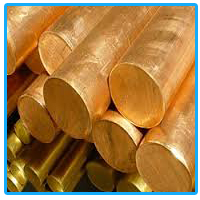
Chromium zirconium copper alloy is used widely in areas where high electrical and thermal conductivity are required combined with good mechanical properties. this is a high strength, seam, high conductivity alloy for spot, butt and projection welding which is ideal for plain as well as coated and galvanized sheets. uses include resistance welding machine electrodes, seam welding wheels, spot welding tips, flash butt welding electrodes, anvil contact bars, electrical switch gear contacts & terminals, electrode holders, cable connectors, current carrying arms and shafts, circuit breaker parts, heat sinks, short circuit rings, mig welding contact tubes and many other applications where copper would normally be the ideal choice for high conductivity but is just not strong enough.
C18150 chromium zirconium copper is used extensively for cap style resistance welding electrodes. evidence suggests that it can provide less sticking and resist deformation longer than its chromium copper counterpart in some specific situations.
ProductionThe first heat treatment stage is solution annealing at approximately 1000 °c. at this temperature the chromium and zirconium atoms are randomly distributed in the copper matrix. the material is then quenched in water. between 400 and 700 °c the chromium and zirconium atoms have a tendency to form precipitates in the copper matrix, but the cooling is too rapid for precipitation to take place. the result is a supersaturated solid solution. the strength of this structure is only slightly higher than that of pure copper and foreign atoms in the copper matrix considerably reduce the electrical conductivity.
The supersaturated solid solution serves as a starting point for further heat treatments. The properties of cu.cr.zr. are achieved by ageing the material at a temperature below 500 °c.The ageing conditions are very critical and are chosen so that the precipitations are coherent with the copper matrix, i.e. the atomic layers of copper continue through the precipitations. although the atomic layers continue through the boundary of precipitates the lattices on both sides of the boundary do not match each other completely. this mismatch causes strain which is responsible for the high mechanical strength.
Another consequence of ageing is that, as the number of foreign atoms in the matrix decreases the electrical conductivity becomes considerably higher. the mechanical properties of cu.cr.zr. are further improved by introducing a cold working process between solution annealing and ageing.





